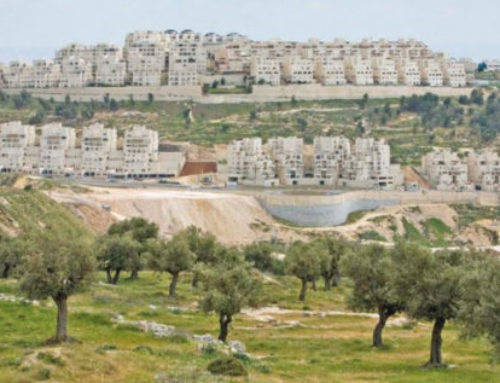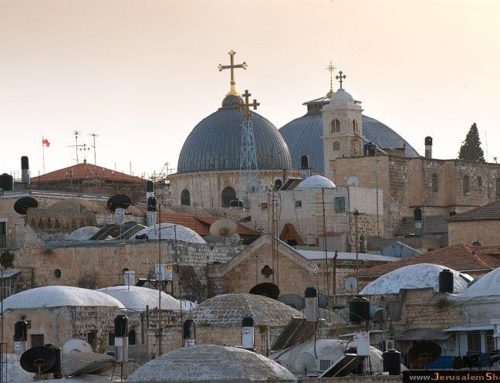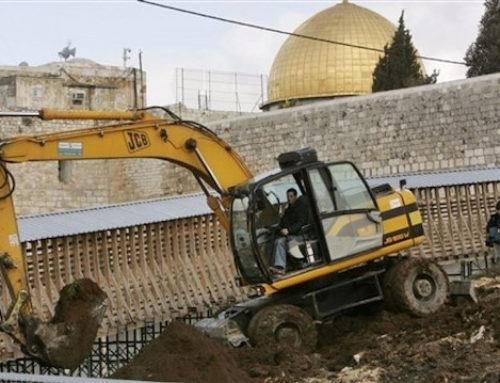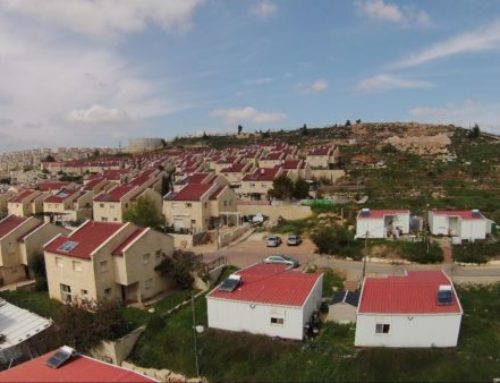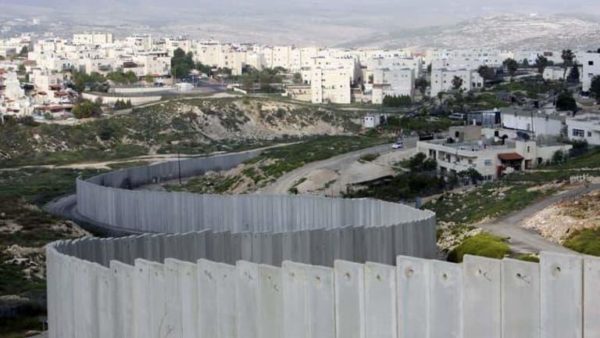
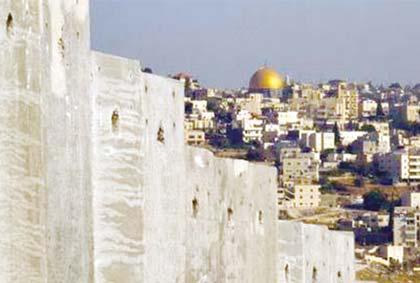
In addition to depriving Palestinians from establishing their own country through parting the land and depriving the Palestinian authority from practicing its power and sovereignty over it, the wall has many negative effects on the daily life of palestinian citizens in the social, educational, medical, geographical, and political sense.in West Bank and East Jerusalem.[5]
In 2002, the implementation of the plan to build the wall started. until now the wall is incomplete, 65.3 percent (465 km) is done,[6] once complete it will cover 700 kilometers mostly[7] in the West Bank, dividing neighborhoods, destroying homes, and isolating 20,000 Palestinians from their surroundings and communities.[8] Under the pretext of security measures one of the most dangerous settlement plans began with a real intention to annex around 52,667.7 hectares of the land of the West Bank including those that were most fertile and rich in water other than the lands already annexed to the municipal boundaries of Jerusalem. [9]

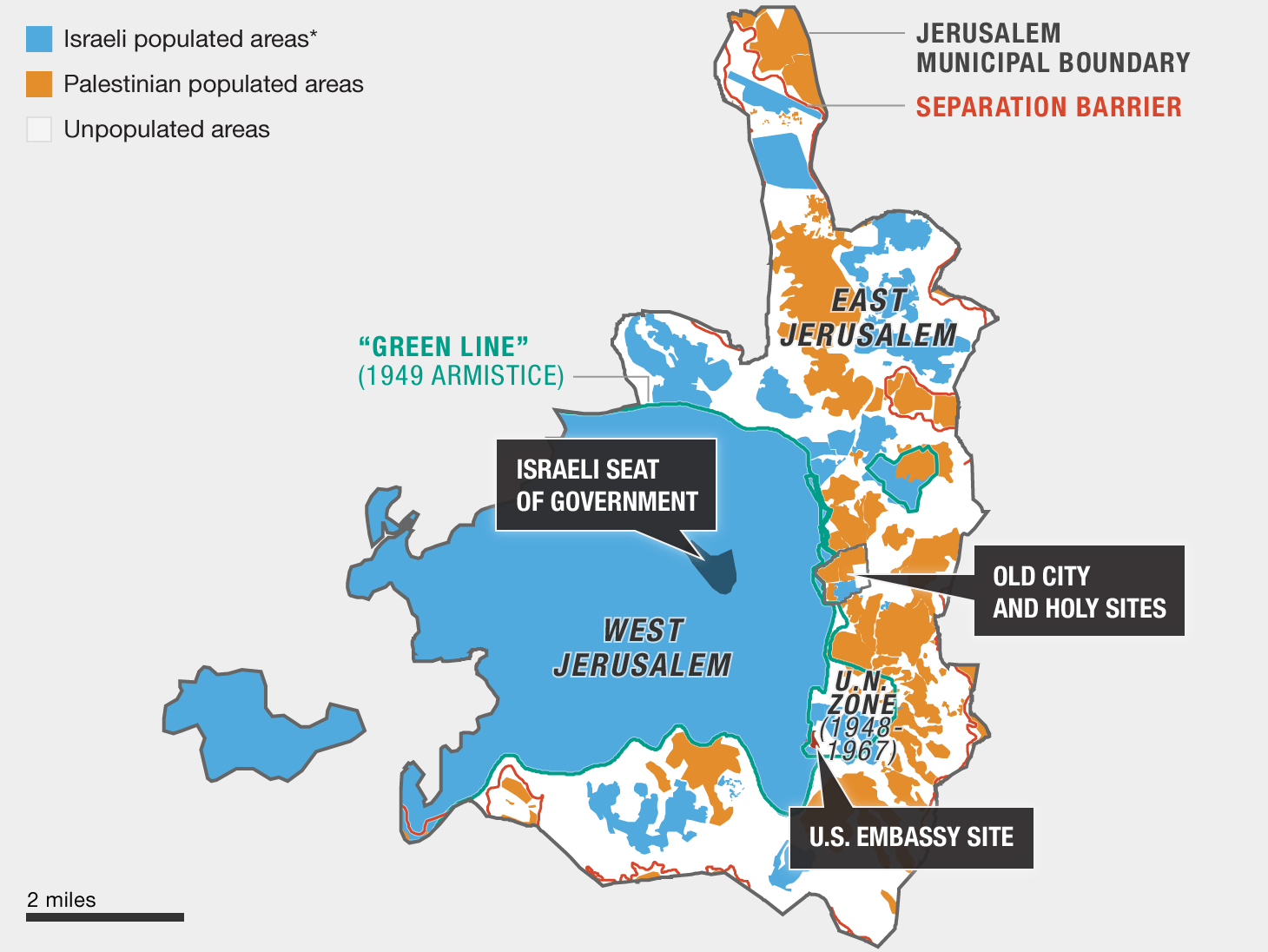
- Isolating East Jerusalem from the West Bank in order to the establish Great Jerusalem as the capital of Israel.[16]
- Displacing Jerusalem Arab population and deporting them elsewhere.
- Enclose Jerusalem’s arab population in small neighborhoods that are surrounded by settlements and are not viable for growth or development demographically, economically, socially or politically.
- Creating a Jewish majority in East Jerusalem by establishing settlements and constructing tourist and industrial areas to encourage the Jewish migration to the eastern part of the city.
- Maintaining the Israeli domination of the holy places and forbidding Arabs and Muslims from reaching them.
- Stopping the demographic growth of the Palestinians and restricting it to a specific area under control and surveillance.[17]
- Expanding settlement activity in agricultural lands that are rich in water.[18]
- Promoting the Jewishness of the state and isolating all that is not Jewish in a game of manipulating demographic balance. [19]
[1] “Greater Jerusalem 2017,” last modified 27 April 2017, http://www.ir-amim.org.il/en/node/2042
[2] “The Separation Barrier,” last modified 11 November 2017, https://www.btselem.org/separation_barrier
[3] “Israel’s Greater Jerusalem Bill,” last modified 5 March 2018, https://www.jurist.org/commentary/2018/03/israels-greater-jerusalem-bill/
[4] “The New Walls of Jerusalem,” Palestinian Studies Journal Vol 15, issue 57, Winter 2004, p 133 http://www.palestine-studies.org/sites/default/files/mdf-articles/ملف%20القدس%20-%20رسم%20أسوار%20القدس.pdf
[5] “The Impact of the Separation Wall on Jerusalem,” http://www.pij.org/details.php?id=1042
[6] “West Bank Barrier,” https://www.ochaopt.org/theme/west-bank-barrier
[7] 85% of the wall is constructed on West Bank lands
[8] “a Look at the Israeli West Bank Barrier Wall,” last modified 30 August 2017, https://blogs.ei.columbia.edu/2017/08/30/a-look-into-the-israeli-west-bank-barrier-wall-baqa-al-gharbiyye/
[9] “The Separation Barrier,” last modified 11 November 2017, https://www.btselem.org/separation_barrier
[10] “The Separation Barrier,” last modified 11 November 2017, https://www.btselem.org/separation_barrier
[11] Mohsen Mohammad Saleh, “Palestinian Strategic Report for 2011,” Beirut: Al-Zaytonah Center for Studies and Consultation, p 273
[12] “The Separation Barrier,” last modified 11 November 2017, https://www.btselem.org/separation_barrier
[13] “The Separation Barrier,” http://www.ir-amim.org.il/en/issue/separation-barrier
[14] “The Impact of the Separation Wall on Jerusalem,” http://www.pij.org/details.php?id=1042
[15] Alian Al-Hindi, “The Separation Wall in Jerusalem: a practical reality of imposing and Israeli final solution,” http://info.wafa.ps/pdf/q20.pdf
[16] “The Separation Barrier,” http://www.ir-amim.org.il/en/issue/separation-barrier
[17] “The Impact of the Separation Wall on Jerusalem,” http://www.pij.org/details.php?id=1042
[18] “The Segregation Wall Impacts on Palestinian Environment,” https://www.arij.org/files/arijadmin/2016/The_Segregation_Wall_impacts_on_Palestinian_Environment.pdf
[19] “The Separation Wall around Jerusalem: Truncating the right to the city of the Palestinians,” http://www.isocarp.net/Data/case_studies/957.pdf


